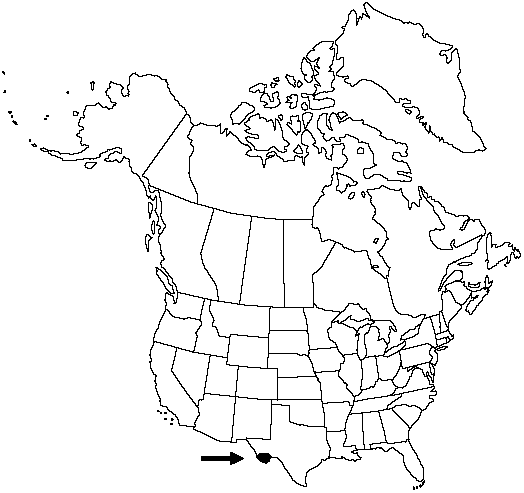Difference between revisions of "Pellaea cordifolia"
Amer. Fern J. 70: 26. 1980.
FNA>Volume Importer |
FNA>Volume Importer |
||
| Line 10: | Line 10: | ||
|name=Adiantum cordifolium | |name=Adiantum cordifolium | ||
|authority=Sessé & Mociño | |authority=Sessé & Mociño | ||
| + | |rank=species | ||
|publication_title=Naturaleza (Mexico City), ser. | |publication_title=Naturaleza (Mexico City), ser. | ||
|publication_place=2, 1(App.): 182. 1890 | |publication_place=2, 1(App.): 182. 1890 | ||
| Line 16: | Line 17: | ||
|name=Pellaea cardiomorpha | |name=Pellaea cardiomorpha | ||
|authority=Weatherby | |authority=Weatherby | ||
| + | |rank=species | ||
}} {{Treatment/ID/Synonym | }} {{Treatment/ID/Synonym | ||
|name=Pellaea sagittata var. cordata | |name=Pellaea sagittata var. cordata | ||
|authority=(Cavanilles) A. F. Tryon | |authority=(Cavanilles) A. F. Tryon | ||
| + | |rank=variety | ||
}} | }} | ||
|hierarchy=Pteridaceae;Pellaea;Pellaea cordifolia | |hierarchy=Pteridaceae;Pellaea;Pellaea cordifolia | ||
| Line 34: | Line 37: | ||
|elevation=1000–2500 m | |elevation=1000–2500 m | ||
|distribution=Tex.;Mexico. | |distribution=Tex.;Mexico. | ||
| − | |discussion=<p>The diploid <i>Pellaea cordifolia</i> has often been treated as a variety of the Central American and South American apogamous triploid, <i>P. sagittata</i>. The two taxa are distinguished by a number of qualitative morphologic features (A. R. Smith 1980), and it seems unlikely that they represent cytotypes of a single species. A. F. Tryon (1957) suggested that <i>P. sagittata</i> may have originated through hybridization between <i>P. ovata</i> and <i>P. cordifolia</i> (as <i>P. sagittata</i> < | + | |discussion=<p>The diploid <i>Pellaea cordifolia</i> has often been treated as a variety of the Central American and South American apogamous triploid, <i>P. sagittata</i>. The two taxa are distinguished by a number of qualitative morphologic features (A. R. Smith 1980), and it seems unlikely that they represent cytotypes of a single species. A. F. Tryon (1957) suggested that <i>P. sagittata</i> may have originated through hybridization between <i>P. ovata</i> and <i>P. cordifolia</i> (as <i>P. sagittata</i> <i></i>var.<i> cordata</i>).</p> |
|tables= | |tables= | ||
|references= | |references= | ||
| Line 43: | Line 46: | ||
-->{{#Taxon: | -->{{#Taxon: | ||
name=Pellaea cordifolia | name=Pellaea cordifolia | ||
| − | |||
|authority=(Sessé & Mociño) A. R. Smith | |authority=(Sessé & Mociño) A. R. Smith | ||
|rank=species | |rank=species | ||
| Line 58: | Line 60: | ||
|publication year=1980 | |publication year=1980 | ||
|special status= | |special status= | ||
| − | |source xml=https://jpend@bitbucket.org/aafc-mbb/fna-data-curation.git/src/ | + | |source xml=https://jpend@bitbucket.org/aafc-mbb/fna-data-curation.git/src/eaa6e58056e40c9ef614d8f47aea294977a1a5e9/coarse_grained_fna_xml/V2/V2_183.xml |
|genus=Pellaea | |genus=Pellaea | ||
|species=Pellaea cordifolia | |species=Pellaea cordifolia | ||
Revision as of 19:46, 16 December 2019
Stems compact, ascending, stout, 6–10 mm diam.; scales uniformly orange-brown and thin, lanceolate to ovate, largest scales 0.3–1 mm wide, margins dentate. Leaves somewhat dimorphic, sterile leaves shorter than fertile leaves, clustered on stem, 15–50 cm; croziers not conspicuously pubescent, densely scaly. Petiole straw-colored, tan, or gray, not lustrous, rounded or slightly flattened adaxially, without prominent articulation lines. Blade ovate-deltate, 2-pinnate proximally, 5–20 cm wide; rachis tan throughout, straight to slightly flexuous, rounded or flattened adaxially, glabrous. Pinnae perpendicular to rachis or slightly ascending, not decurrent on rachis, usually with 3–15 ultimate segments; costae straight to slightly flexuous, 25–100 mm, longer than ultimate segments. Ultimate segments round-cordate to deltate-cordate, 5–15 mm, herbaceous to leathery, glabrous or puberulent; margins recurved on fertile segments, covering less than 1/2 abaxial surface, borders whitish, crenulate; apex rounded or retuse. Veins of ultimate segments usually evident. Sporangia short-stalked, containing 64 spores, not intermixed with farina-producing glands. 2n = 58.
Phenology: Sporulating summer–fall.
Habitat: Rocky slopes and ledges, usually on volcanic substrates
Elevation: 1000–2500 m
Discussion
The diploid Pellaea cordifolia has often been treated as a variety of the Central American and South American apogamous triploid, P. sagittata. The two taxa are distinguished by a number of qualitative morphologic features (A. R. Smith 1980), and it seems unlikely that they represent cytotypes of a single species. A. F. Tryon (1957) suggested that P. sagittata may have originated through hybridization between P. ovata and P. cordifolia (as P. sagittata var. cordata).
Selected References
None.
